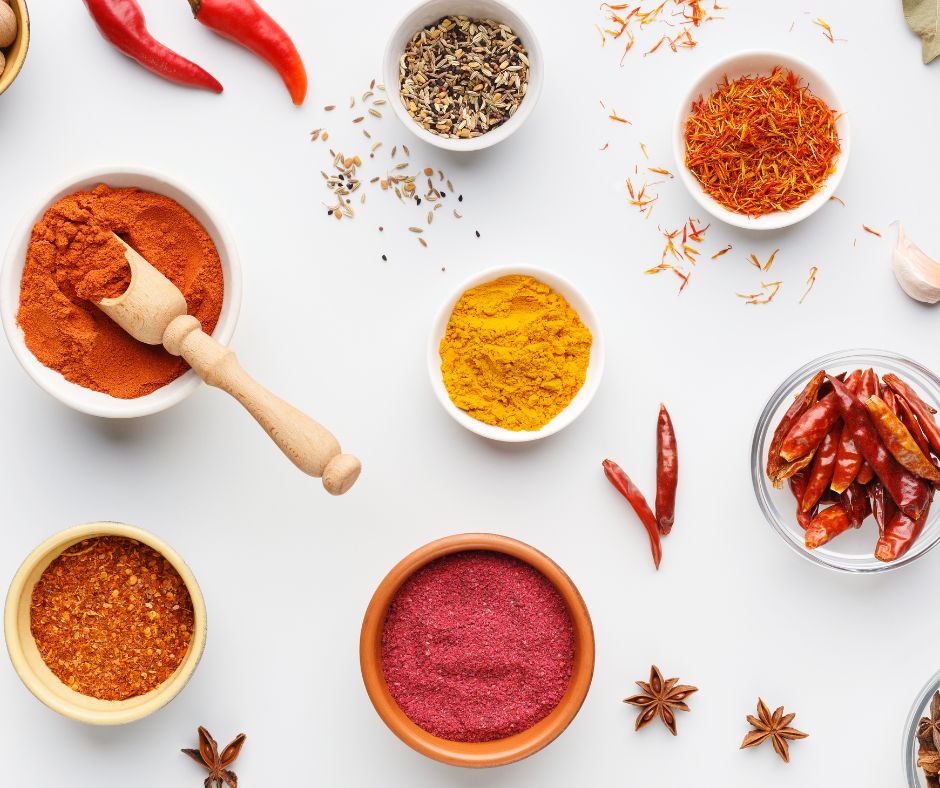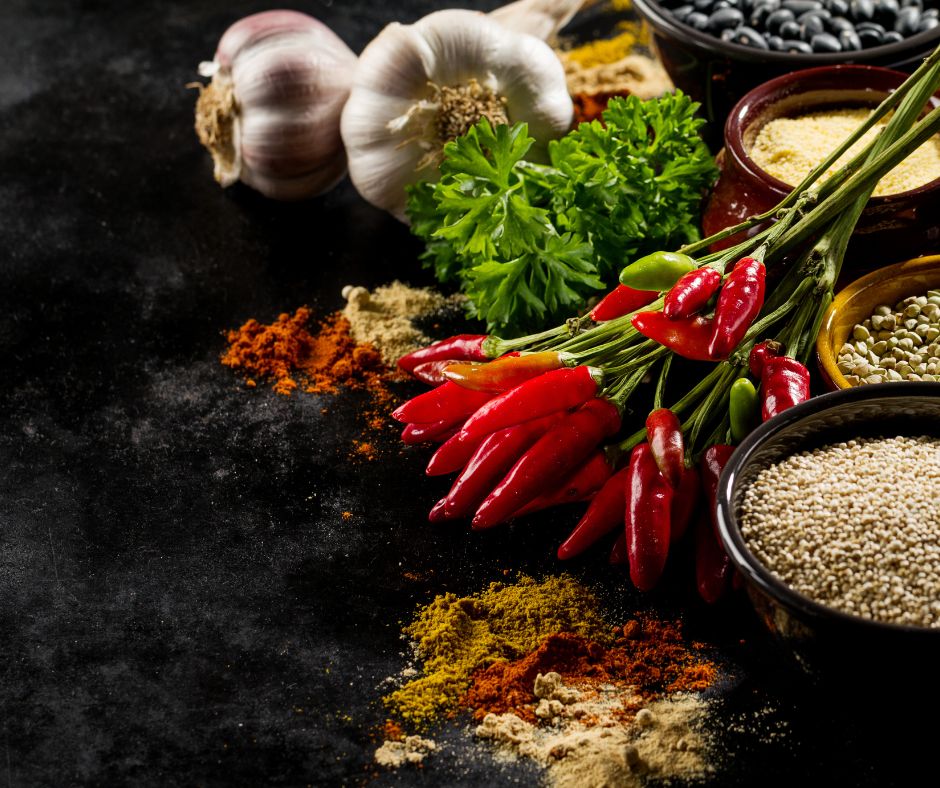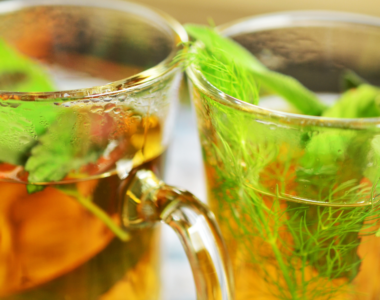
Are you seeking for ways to flavor your dish heavily without using a lot of salt or fat? Instead, flavor your foods with delicious spices! Spices are used in a wide range of savory and sweet meals, and they can reveal a lot about a culture’s cuisine. Even the most straightforward dishes may taste fresh and fascinating by adding a little spice. Find recipes that incorporate one or more of these spices, or add a new spice to a family favorite.
Table of Contents
What is a spice?
Spices are derived from a variety of plants or trees’ bark, buds, fruit, roots, seeds, or stems. (In contrast, a herb is made from the leafy sections of plants without woody stems. They are available dried or fresh. Fresh herbs are more flavorful, while dried herbs quickly lose their potency.)
Here are some common cooking spices you can find in many kitchens

Allspice
The name “allspice” refers to a flavor combination of cinnamon, nutmeg, and cloves. This spice can be used in savory and sweet dishes. It gives baked items like spiced cakes or pumpkin pies a distinctive flavor. It is the primary component in jerk seasoning and is also used in pickling. Allspice is used in North American baking, but it is more frequently seen in Jamaican and South American cuisine.
Anise
Foods taste sweet licoricey thanks to anise. It is frequently used in Southeast Asian cookery to flavor pork, poultry, and breads as well as drinks like this Hot Mulled Tea.
Cardamom
The flavor and aroma of cardamom are warm, spicy, and sweet. Pastries, rice dishes, and sweet puddings all frequently contain it. Use just a tiny bit at a time because it is very potent. East Indian and Scandinavian (Denmark, Norway, and Sweden) cuisines both frequently employ it.
Cayenne
Cayenne is a potent, hot powder derived from tropical chillies, commonly known as red pepper. It is a staple of numerous cuisines, including African, Cajun, Chinese, Indian, Mexican, South American, and Southeast Asian cookery, and has more than 200 variants. It can be used to give a little heat to a number of foods. Try it in this dip with squash.
Chinese five spice
Cinnamon, cloves, fennel seeds, star anise, and Sichuan peppercorns are all ground up and blended in equal amounts to make Chinese five spice, a potent blend. You can make your own or buy pre-packaged mixes in Asian markets and most grocery stores, which are frequently used in Chinese cooking. It is most frequently used in foods that contain soy sauce.
Cinnamon
A flavorful bark with a sweet, woodsy, and fruity aroma is cinnamon. Although there are other types of cinnamon, cassia cinnamon is the one that is most frequently sold in North America. You can use it to savory stews, soups, and curries despite the fact that you might be accustomed to using it in sweet foods. Beef goes great with it as well. Use it in chili casserole or rhubarb and apple loaf.
Garam Masala
Similar to curry powder, but without cumin or caraway, is the spice mixture known as garam masala. Similar to curry powder, the type of spices used will depend on the cook and the recipe. It typically includes black pepper, fennel, cinnamon, clove, and cardamom, with mace and nutmeg occasionally added. It offers a deep, rich flavor and is frequently used in Indian cuisine. Usually, it is added near the conclusion of cooking. Try it in Egg Bhurji, an Indian delicacy of scrambled eggs.
Ginger
A range of sweet and savory foods benefit from the sweet and spicy flavor that ginger adds. Fresh ginger tastes different from dried ginger. In addition to being wonderful in savory foods like soups and stews like Spicy Chicken and Squash Stew, curries, Asian stir-fries, meats, and fruit compotes, ginger is well-known for its use in baked goods like gingerbread, spice cookies, ginger ale, and ginger beer. Asian and Southeast Asian cuisines frequently use ginger.
If you searching for an online store to by new spices ceylonauthentics.com is the best place.
I’m new to cooking. What are some basic spices I should have on hand?
A well-stocked spice rack can take your cooking from bland to brilliant! Here are some essentials:
Garlic powder/cloves: A versatile base for countless dishes.
Onion powder: Adds savory depth without the chopping.
Black pepper: A must-have for adding heat and enhancing other flavors.
Salt: Crucial for overall taste development. Experiment with different varieties like kosher or sea salt.
Ground cumin: Warm, earthy notes perfect for Mexican and Tex-Mex cuisine, but also great in curries and chili.
Paprika: Smoked or sweet varieties add smoky depth or a touch of sweetness to various dishes.
Chili powder: A blend of spices for a kick of heat, perfect for chili, tacos, and Tex-Mex recipes.
Cinnamon: Sweet and warming, ideal for desserts and savory dishes like stews or tagines.
Dried oregano: A staple in Italian and Mediterranean cooking, adds a herbaceous flavor.
Cayenne pepper: A fiery spice for a powerful heat boost, use sparingly!
Should I buy whole spices or pre-ground spices?
Whole spices retain their flavor and aroma longer. Grind them fresh using a mortar and pestle or spice grinder just before use for maximum impact. However, pre-ground spices are convenient and perfectly acceptable for everyday cooking.
Where can I find good quality spices?
Grocery stores, ethnic markets, and online retailers all offer a variety of spices. Look for reputable brands that prioritize quality ingredients. Ethnic markets may offer a wider selection, especially for international cuisines.
Organic spices – are they worth the extra cost?
Organic spices are generally free of pesticides and chemicals. While this doesn’t necessarily mean more health benefits, it can be a good indicator of overall quality. If budget is a concern, prioritize organic options for frequently used spices.
How can I tell if my spices are still fresh?
Fresh spices have a vibrant color and a strong aroma. Pre-ground spices lose potency faster than whole spices. If your spices seem dull in color or have a weak scent, it’s time to replace them.
How long do spices typically last?
Whole spices generally last longer than pre-ground spices. Store spices in airtight containers in a cool, dark place away from heat and sunlight. Whole spices can last for 2-4 years, while pre-ground spices might only last 6-12 months.
What are some creative ways to use spices beyond savory dishes?
Spices can elevate sweet treats too! A pinch of cinnamon or nutmeg can enhance baked goods. Cardamom pairs beautifully with rice pudding and other creamy desserts. Experiment and discover unexpected flavor combinations!
I’m worried about using too much spice and making my food too hot. Any tips?
Start with a small amount and taste as you go. You can always add more spice, but you can’t take it away! Many spice blends already contain a balanced amount of heat. Consider using a spice grinder to control the intensity of freshly ground spices.
Are there any safety concerns with using spices?
Generally not. However, some individuals may experience allergic reactions to certain spices. Start with small amounts and introduce new spices gradually.
Can spices help me cut back on sodium?
Absolutely! Spices add layers of flavor that can help you reduce your reliance on salt. Experiment with different spice combinations to discover delicious, low-sodium dishes.



